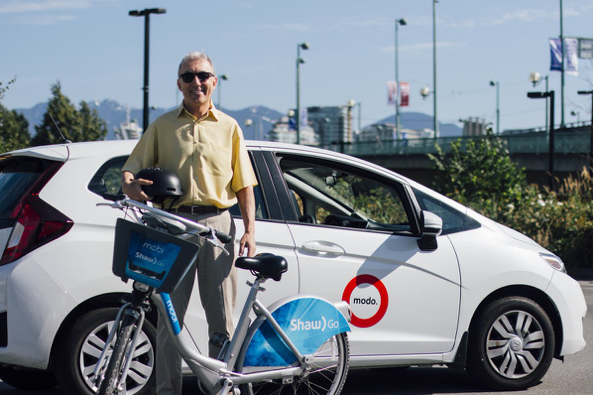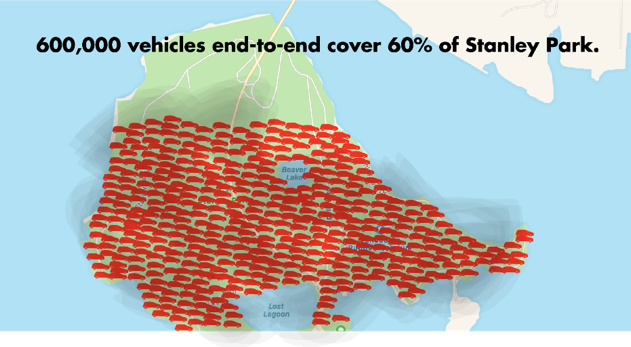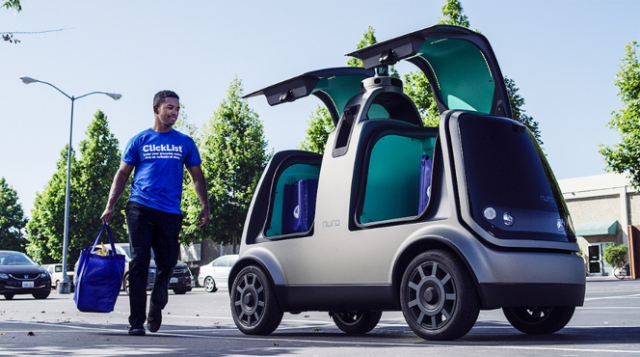#Transport2050: Modo CEO Patrick Nangle sees shared, autonomous and electric vehicles on the horizon
#Transport2050: Modo CEO Patrick Nangle sees shared, autonomous and electric vehicles on the horizon

We’ve asked thought leaders to share their vision for the future of transportation. What do you see? Shape the future of how we move and live. Visit transport2050.ca.
By Patrick Nangle, CEO, Modo
Decongested! That’s my vision for the future of transportation in our region: great public transit complemented by the availability of tens of thousands of shared vehicles that are electric and autonomous. It’s the path to affordable, convenient, inclusive and sustainable transportation.
We live in one of the best places in the world. So attractive in fact that we expect to welcome up to a million new residents over the next two decades. That could add more than 600,000 cars to the 1.6 million already in the region. Metro Vancouver could be overwhelmed by that surge in the vehicle population. If we think traffic congestion, parking availability and pollution is already bad, we haven’t seen anything yet.

Happily, we can act today to avoid that outcome. Over 3,000 shared cars in our region today, comprised of round-trip vehicles (e.g. Modo) and to a lesser degree one-way, have replaced up to 30,000 privately owned vehicles. A good start but it only scratches the surface. We will need to replace a very large number of privately owned vehicles with shared ones. Tens of thousand of shared vehicles replacing hundreds of thousands of privately-owned cars. Imagine life with even 25 per cent fewer cars on the roads. That would be a great start. Daunting but doable!

Autonomous and electric vehicle (EV) technologies will play an important role in defining the car of tomorrow. We must realize though that replacing internal combustion engine vehicles with EVs, while key to reducing emissions, if done on a 1:1 replacement basis does nothing to alleviate congestion and unlock land use opportunities, which are currently burdened by parking. Even worse, replacing the current vehicle population 1:1 with autonomous vehicles could amplify the growing congestion problem. While electric and autonomous vehicle bring unique and important benefits, their true potential will only be realized with car sharing.
Complementing great public transit with a transition away from privately owned vehicles will ensure a brighter and less congested future. That’s why round-trip carsharing is embraced and supported by transit agencies and municipalities worldwide.
As CEO of Modo, I ride the bus to work every day and use a shared car when I need one. And while not everybody can, we can all challenge ourselves to make different transportation choices. With that, maybe a 25 per cent reduction in the number of cars on the road is closer than we think.
The content presented here is meant to promote discussion and are the personal reflections of the writer. This information does not represent the views or opinions of TransLink.







Switching away from cars to transit, walking or cycling is great for reducing congestion, but autonomous vehicles will only make it worse. Not only will they take up just as much road space while they’re delivering riders to their destinations, they’ll take up space while “deadheading” to the next trip.
The only scenario in which autonomous vehicles will reduce congestion is if it turns out that most people use them to travel the “last mile” between rapid transit and their residence. I’d like to think that would be true, but I’m skeptical…
This is a great point, and I think it’s what Patrick Nangle was getting at when he said that replacing vehicles 1:1 with autonomous ones could make congestion worse.
A better scenario is probably one where only a small minority of people own their own autonomous vehicles (mostly those with long commutes that live outside of transit service areas), with the rest being able to rely on transit and shared AVs. In this scenario, the total number of vehicles should be significantly reduced, reducing total congestion even with AVs “deadheading”.
There are ways to reduce deadheading, such as surge pricing. People who are more price sensitive than time sensitive could elect to wait for an available trip to better utilize capacity. A well implemented system could give a heads up that your ride is arriving in about an hour (or two) as opposed to immediately based on booked trips arriving in your area and forecasting.
Before trying to project impacts of carsharing it could be helpful to know how much it’s used for each of the following:
– an alternative to owning a car
– allows a family to reduce the number of cars owned by one, e.g. from 2 to 1
– no change in number of vehicles owned, just some reduction in use of owned vehicles
Do we know how the average occupancy of shared cars compares with the occupancy of owned cars
I dont understand how can car sharing reduce the number of cars on the road by 25%. It is just driving another car instead of your own car so the number should be the same unless you are pooling with other people. (Or you dont drive due to unavailability of cars:) I totally support and love car sharing but just wanted to point out the wrong math.